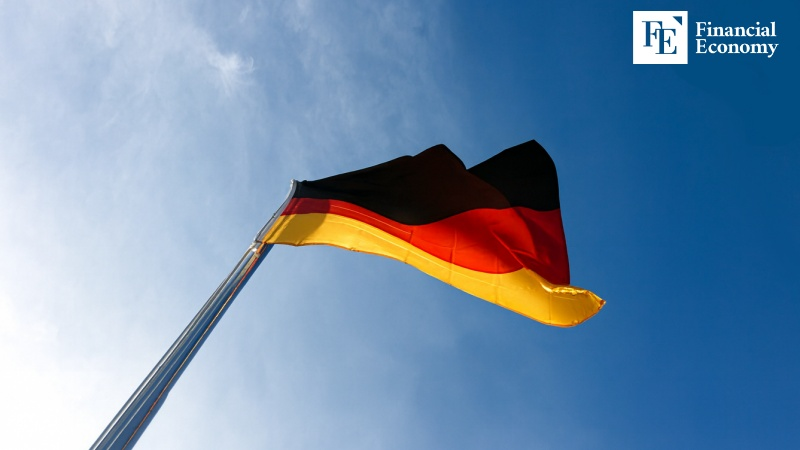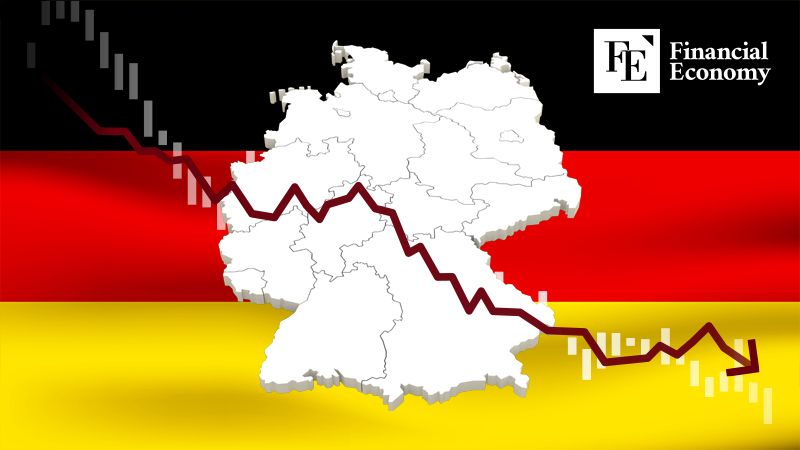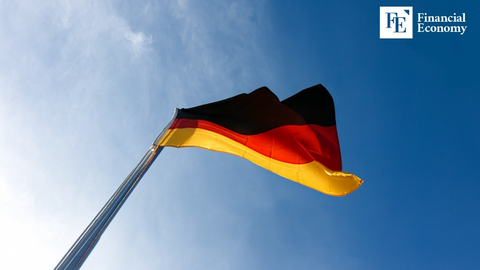Germany Turns to “Wartime Economy” to Escape Recession, But Fears Grow Over Defense-Led Growth Paradox
Input
Modified
“Balanced budget” principle effectively abandoned
Surging bond issuance raises sovereign-debt risks
Manufacturing decline deepens as defense dependence grows

Germany has abandoned its long-held fiscal discipline and declared a USD 1.15 trillion spending plan to pull the economy out of a three-year recession. The government is channeling funds into defense, infrastructure, and industrial revitalization under what officials call a “wartime economy” strategy. Yet with national debt issuance surging, concerns are mounting over sustainability, as the country’s once-dominant manufacturing base—centered on automobiles—continues to erode.
Defense-centric “wartime economy” gains momentum
German Economy and Energy Minister Katherina Reiche said at a press briefing on October 8 that “Germany’s economy has been treading water since 2019, and the public knows things are not going well.” Berlin’s latest forecast projects just 0.2 percent growth this year—a slight uptick from April’s zero-growth outlook but far from a sign of recovery. If that scenario materializes, Germany will record its second consecutive year of contraction since reunification, following 2002–2003.
To break this stagnation, the government has abandoned the balanced-budget policy maintained for sixteen years and pivoted to expansionary spending comparable to wartime mobilization. In July, the Bundestag approved a constitutional workaround to the “Schuldenbremse” (debt brake), opening a ten-year window for as much as USD 1.15 trillion in fiscal injections. The funds combine special budgets and general appropriations focused on defense, infrastructure, energy networks, and core technologies. Central to the plan is rapid restoration of defense capacity. With Russia’s protracted war and doubts over U.S. trans-Atlantic commitments, Berlin pledged to ramp up ammunition, air-defense, and mobility-equipment production while simultaneously strengthening rail, road, and port logistics vital for military readiness.
Fiscal execution has also been mapped out. Over the next twelve years, Berlin will establish a USD 575 billion infrastructure fund to refurbish aging railways, bridges, and power grids, while effectively removing the GDP-ratio cap on defense spending to address equipment gaps. Long-term sovereign bonds, public-investment funds, co-financing with state governments, and fast-track procurement and environmental approvals will all be mobilized to minimize project delays. Government documents describe a phased approach: “Kick-start private investment by first activating defense and infrastructure.”
Markets and research institutions remain split. Goldman Sachs projects that, if swiftly implemented, the plan could lift Germany’s real growth to nearly 2 percent by 2027; some investment banks argue a “German Marshall Plan” could raise eurozone growth by 0.4 percentage points. Conversely, the Ifo Institute warns that “expansionary fiscal policy will mask recovery in the numbers, but without private-sector productivity and investment, a broad rebound is unlikely.” Minister Reiche herself admitted that “most growth in coming years will stem from large-scale public spending such as defense,” cautioning that without structural reforms—labor supply, energy-cost stabilization, and regulatory simplification—the fiscal multiplier could weaken.
Record-high sovereign issuance and risk of becoming Europe’s top debtor
As expansion accelerates, the bond market’s focus has shifted from how much Germany borrows to whether investors can absorb it. According to ING, outstanding German federal bonds already approach USD 2.3 trillion, and full debt financing of new spending would expand that figure by roughly 50 percent. Once considered Europe’s ultimate “safe asset,” Bunds could flood the market, forcing global portfolio reallocation and testing Berlin’s ability to preserve investor trust.
Yields and currency-hedged returns are now key variables. As the Nikkei notes, ten-year Bund yields stood around 2.57 percent in early October, but for dollar-based investors applying hedges, returns rise to about 5 percent—exceeding U.S. Treasuries and potentially attracting foreign inflows. Roughly 25 percent of outstanding Bunds are already held by non-eurozone investors. Yet declining tax revenue and sluggish growth have prompted Berlin to cut its revenue forecast through 2029 by USD 38 billion, adding strain. As issuance accumulates, volatility in long-term yields may widen bid-ask spreads and distort the yield curve.
The fiscal burden is becoming concrete. The 2026 federal budget totals USD 598 billion, with defense spending at USD 95 billion—a 32 percent increase from the prior year. New borrowing is expected to reach USD 200 billion in 2026 and USD 214 billion by 2029, pushing the debt ratio from 63 percent today to roughly 70 percent. The Washington Post described the plan as “a policy turning point,” predicting that Germany, once synonymous with fiscal restraint, could become Europe’s largest debtor nation.
In this context, Germany’s wartime-style fiscal surge is both a tool for revival and a risk amplifier for bond markets. Even if Bunds retain safe-haven appeal, the mix of defense buildup, welfare expansion, and weak revenue could keep funding costs elevated. Berlin says it will pre-announce quarterly issuance schedules, balance maturities, prioritize liquid ten-year bonds favored by foreign investors, and refine swap mechanisms between green and conventional Bunds. But if bid-cover ratios or tail spreads turn unstable, those safeguards may quickly unravel.

External instability becomes a paradoxical lifeline
Behind Berlin’s turn toward wartime-scale spending lies a deeper erosion of industrial strength. The prolonged triple burden of energy, labor, and regulatory costs across Europe has driven companies up the cost curve, eroding price and delivery competitiveness in global value chains. The 2022 spike in gas and electricity prices hit energy-intensive sectors—steel, chemicals, cement—particularly hard. A survey by the Federation of German Industries (BDI) last year found that over 45 percent of firms plan to move at least part of their production abroad within five years.
Automotive manufacturing has suffered most. Ernst & Young reports that between July 2023 and June 2024, German manufacturing shed 114,000 jobs, more than 51,000 of them in the auto sector. Faced with weak demand and rising costs, companies have turned to restructuring and CAPEX cuts. Given that automobiles anchor Germany’s employment, exports, and R&D, this wave threatens the sector’s—and by extension, the nation’s—potential growth capacity.
Experts warn that excessive reliance on defense demand may produce a “short-term stimulus–long-term void” paradox. Defense production involves lengthy planning, certification, and procurement cycles, and its order flow depends heavily on geopolitical volatility. Without external conflicts such as the Russia-Ukraine war, demand could flatten. Moreover, scaling up defense output requires a wide industrial base—materials, machinery, electro-optics, software—that cannot instantly replace lost capacity in autos and machinery.
Proposed solutions call for combining wartime-style aggregate demand with private-sector productivity recovery. In the short term, this means expanding power-grid capacity and stabilizing industrial electricity costs through energy-tax and network-fee reforms; over the medium term, it involves dual-use technology transfer between automotive and defense sectors and reshoring incentives to rebuild value chains domestically. Analysts agree that fiscal expansion alone is merely a necessary condition: real industrial revival depends on execution in energy, labor, regulatory, and technological reform.






















Comment